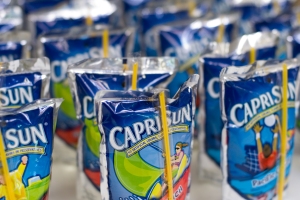
After the holiday’s past it seemed liked everyone had a New Year’s resolution or a new diet plan that they were implementing. As an RD it is always interesting to hear what crazy new diet people are trying out. I figured most people would be jumping on the ever so popular “low-carb” diet plan or even better the currently popular “gluten free” bandwagon but to my surprise five co-workers all started a fruit and vegetable juice cleanse! When I saw all these nurses who typically eat Papa John’s pizza and a soda for lunch downing green concoctions on their lunch breaks I had to ask what diet they were on. This cleanse consisted of nothing but juice for 1 week? NO protein, NO grains, NO fats, NO supplements, just raw fruit and vegetable juices! They asked me my thoughts on a juice cleanse and of course and you can imagine I expressed my long list of concerns to them:
Just a few of …THE NOT SO HEALTY SIDE EFFECTS OF A JUICE CLEASE:
1. Too few calories (usually less than 1000 cal/day)
2. Sole source of energy is coming from pure sugar
3. Blood glucose levels reflect a pattern of elevated spikes and blood sugar crashes
4. After about 2 days glycogen stores in the liver are depleted
5. Weakness and fatigue set in
6. Inadequate kcal intake leads to your body breaking down stored fat and muscle for energy resulting in loss of lean body mass
7. Irritability occurs as a result of your brain being starved; which can lead to depression and mood swings
8. When your muscle proteins are broken down for energy two of the bi-products are ammonia and uric acid. Now your kidneys have to work harder.
9. The high carbohydrate load from the juicing can lead to diarrhea, which can lead to dehydration.
10. Before the end of the first week the villi in your intestine can start to atrophy from no bowel stimulation from solid foods.
11. Loss of muscle mass leads to a slower metabolism
12. Once solid foods are re-introduced into the diet, weight gain is common because there is less muscle mass to use the extra calories being consumed and so they are more likely to be turned into fat.
As expected, before the end of the first day of the juice cleanse my co-workers were complaining about how tired they were and how they felt starved, had headaches etc. By the end of the week a few of the juicers claimed to have “lost weight” (likely water and muscle), and that they “felt clean.” Within a month not to my surprise they all had gained the weight they lost back and some.
Juicing can be part of a healthy diet however, and I do want to give credit where it is deserved. Fresh juicing contains more nutrients that pre-squeezed juices at the grocery store because it has less time to oxidize. Including a fresh squeezed antioxidant rich fruit and vegetable juice in a well balanced diet plan can absolutely be part of a healthy diet. Still better than drinking a liquefied spinach, apple, orange and carrot juice that lacks fiber to keep you full and is high in sugar – eat fresh, raw whole fruit and vegetables. You will ingest fewer calories, less sugar and stay fuller longer because of the fiber content. So with that being said, To Juice or Not to Juice…that is the question, tell us what you think about juicing.
Want more information on Juicing, check out these websites:
http://www.mayoclinic.com/health/juicing/AaN02107
http://www.nytimes.com/2010/10/28/fashion/28Cleanse.html?pagewanted=all
http://altmedicine.about.com/od/detoxcleansing/a/juice_fasting.htm
http://www.webmd.com/diet/features/juicing-health-risks-and-benefits
Written By: Kathleen Chevalier, RD





